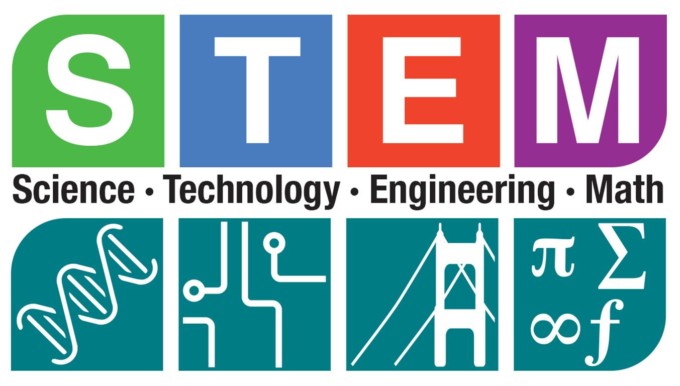In questions of science, the authority of a thousand is not worth the humble reasoning of a single individual.
– Galileo Galilei
Science is a form of knowledge that seeks to describe and explain the natural and physical world and its place in the universe. Occasionally, the fundamental theories, concepts, and structures of science change but, for the most part, the basic ideas of science – ideas such as the cellular basis of life, the laws of energy, the particle theory of matter – have proven stable. Technology includes much more than the knowledge and skills related to computers and their applications. Technology is both a form of knowledge that uses concepts and skills from other disciplines (including science) and the application of this knowledge to meet an identified need or solve a specific problem using materials, energy, and tools (including computers). The method of technology consists of inventing or modifying devices, structures, systems, or processes. Science is not only a body of knowledge but “a way of knowing”. Scientific investigation involves exploration, experimentation, observation and measurement, and analysis and dissemination of data. These activities require specific skills and habits of mind; for example, accuracy, discipline, and integrity in the application of scientific principles are fundamental to scientific activity. The science and technology curriculum is designed to develop these skills and habits of mind.
Technology is also “a way of knowing” and a process of exploration and experimentation. Technological investigation involves the application of methods known as design processes, which in turn involve the use of concepts and procedures such as the identification of a need or problem and the selection of a best solution.
The world as we know it today has been affected in many important ways by science and technology. For example, science has radically altered and expanded our understanding of earth and space, of the workings of the human body, and of the ways in which living things interact; technology has revolutionized the way we communicate and made vast changes in our lives through the discovery of new drugs and materials. It is important, therefore, that students see science and technology in this wider context – as endeavors with important consequences for people – and that they learn to relate their knowledge of science and technology to the world beyond the school.
Just as mankind has moved from ape to Alexander, science and technology has moved forward from cradles to cranes.
Strands in the Science and Technology Curriculum:-
The science and technology expectations are organized into five strands, which are the major areas of knowledge and skills in the science and technology curriculum. The five strands, which combine topics from science and technology, are:
- Life Systems
- Matter and Materials
- Energy and Control
- Structures and Mechanisms
- Earth and Space Systems.
Attitudes in Science and Technology
Students need to develop the attitudes or “habits of mind” that are considered essential for meaningful work in science and technology. These include: commitment to accuracy, precision, and integrity in observation, experimentation, and reporting; respect for evidence; concern for the observance of safety procedures; and respect for living things and the environment. These habits of mind have been incorporated into the specific expectations, especially those grouped under the heading Developing Skills of Inquiry, Design, and Communication. Activities that involve students in investigating issues related to science and technology in the world outside the school provide opportunities for them to develop the attitudes and values needed to make informed and responsible decisions. Students’ attitudes towards science, technology, and education can have a significant effect on their achievement of the expectations. Teaching methods and learning activities that encourage students to recognize the value and relevance of what they are learning will go a long way towards motivating students to work and to learn effectively.
The Role of Technology in Society:
Throughout the history of civilizations, the social fabric of humans and their enterprises has been involved with technology. Today, every human activity is dependent upon various tools, machines and systems from growing food and providing shelter to communication healthcare and entertainment. Some machines like tractors speed up work and do much more than has been ever done before while aero-planes and Internet perform functions that were never possible or ever imagined. This collection of devices, capabilities and the knowledge that accompanies them is called technology. Unlike science, which aims at “understanding”, technology aims at “solving problems”. This is sometimes done without the hind-sight of science. Broadly speaking technology is how people modify the natural world to fit their own purposes. From the Greek word “techne” meaning art or artifice or craft, technology literally means the act of making or crafting. More generally it refers to the diverse collection of processes, knowledge and skills that people use to extend human abilities and to satisfy human needs and wants.
Science, Technology and Development: an interface:
The understanding of the close relationships between science and technology and how they impinge upon development is critical. While science helps us to know what exists and why it is or behaves that way, technology gives us the know-how and capability to achieve our human needs and wants. Both science and technology have basic knowledge, skills, attitudes and values that are necessary for development. The modern world is by and large a man made world where technology reigns. Technological advancement has tremendously enhanced human capability. It has extended the senses and created possibilities never before imagined. Our modern day political clout, economic might and socio-cultural transformations are subject to and functions of our technological capability.
References:-
http://portal.unesco.org/education/en/files/52553/11725002665Kerre.pdf/Kerre.pdf
http://www.edu.gov.on.ca/eng/curriculum/elementary/scientec18curr.pdf
– Hitarthi Shah
